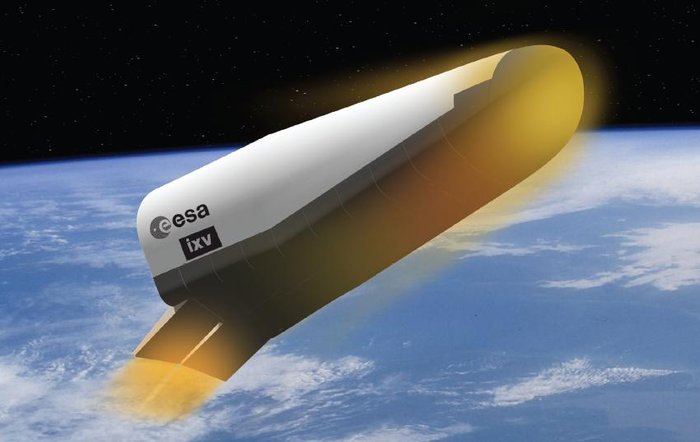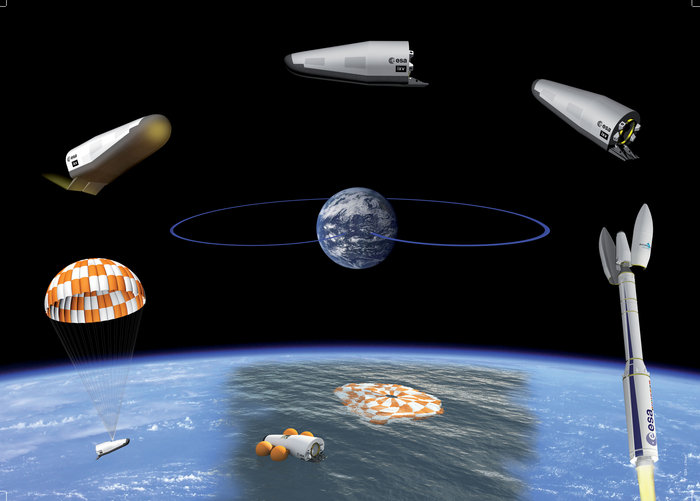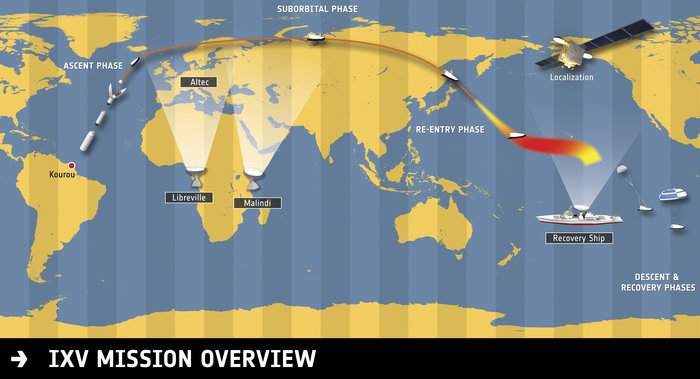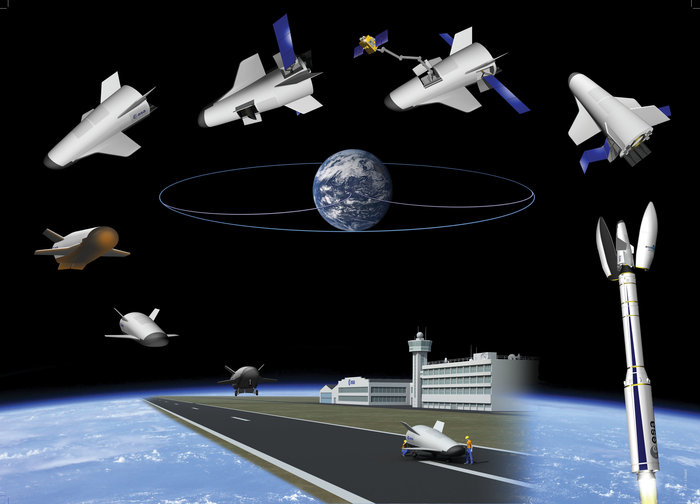ESA’s Intermediate eXperimental Vehicle (IXV) ready for launch and reentry mission

ESA’s Intermediate eXperimental Vehicle (IXV) is ready for its launch and reentry mission on February 11, 2015. The launch is scheduled for 13:00 UTC atop a Vega rocket from Europe’s Spaceport in French Guiana.
Europe’s ambition for a spacecraft to return autonomously from low orbit is a cornerstone for a wide range of space applications, including space transportation, exploration and robotic servicing of space infrastructure.
This IXV mission will test cutting-edge system and technology aspects to provide Europe with an independent reentry capability, and a building block for reusable space transportation systems.
It will validate designs for lifting-bodies, incorporating both the simplicity of capsules and the performance of winged vehicles, with high controllability and manoeuvrability for precision landing.

IXV. Image credit: ESA/J.Huart
After separating from Vega 320 km above Earth, the five-meter-long, two-tonne vehicle will climb to a height of around 450 km and then descend for reentry, recording a vast amount of data from a large number of conventional and advanced sensors.

ESA's IXV reentry vehicle. Image credit: ESA-J. Huart, 2012
After maneuvering to decelerate from hypersonic to supersonic speeds, IXV will deploy a multistage parachute to slow the descent further. Flotation balloons will keep it afloat after splashdown in the Pacific Ocean, where it will be recovered by a ship for detailed analysis.
The entire flight will last about 100 minutes.

XIV mission overview. Image credit: ESA–J. Huart
The knowledge gained from the IXV mission will be key in ESA’s future plans involving applications requiring controlled atmospheric reentry. PRIDE mission is proposed as a follow-up.
It will focus on system and technology performance verification in all flight conditions (i.e. hypersonic, supersonic, transonic, subsonic). This will be achieved through an end-to-end European orbital mission with landing on a conventional runway.

PRIDE mission. Image credit: ESA-J. Huart, 2012
Applications for controlled atmospheric reentry vehicles
- Reusable launchers stages (lower and upper),
- Robotic exploration (for example, sample return from Mars or asteroid),
- Servicing of orbital infrastructures (for example, International Space Station),
- Servicing of future generation satellites (for example, in-orbit refuelling or disposal),
- Microgravity experiments (for example, optimum time/cost ratio),
- Earth sciences (for example, high-altitude atmospheric research),
- Earth observation (for example, crisis monitoring).
Live streaming of this event starts at 12:45 UTC on February 11, 2015.
Featured image credit: ESA

Commenting rules and guidelines
We value the thoughts and opinions of our readers and welcome healthy discussions on our website. In order to maintain a respectful and positive community, we ask that all commenters follow these rules.